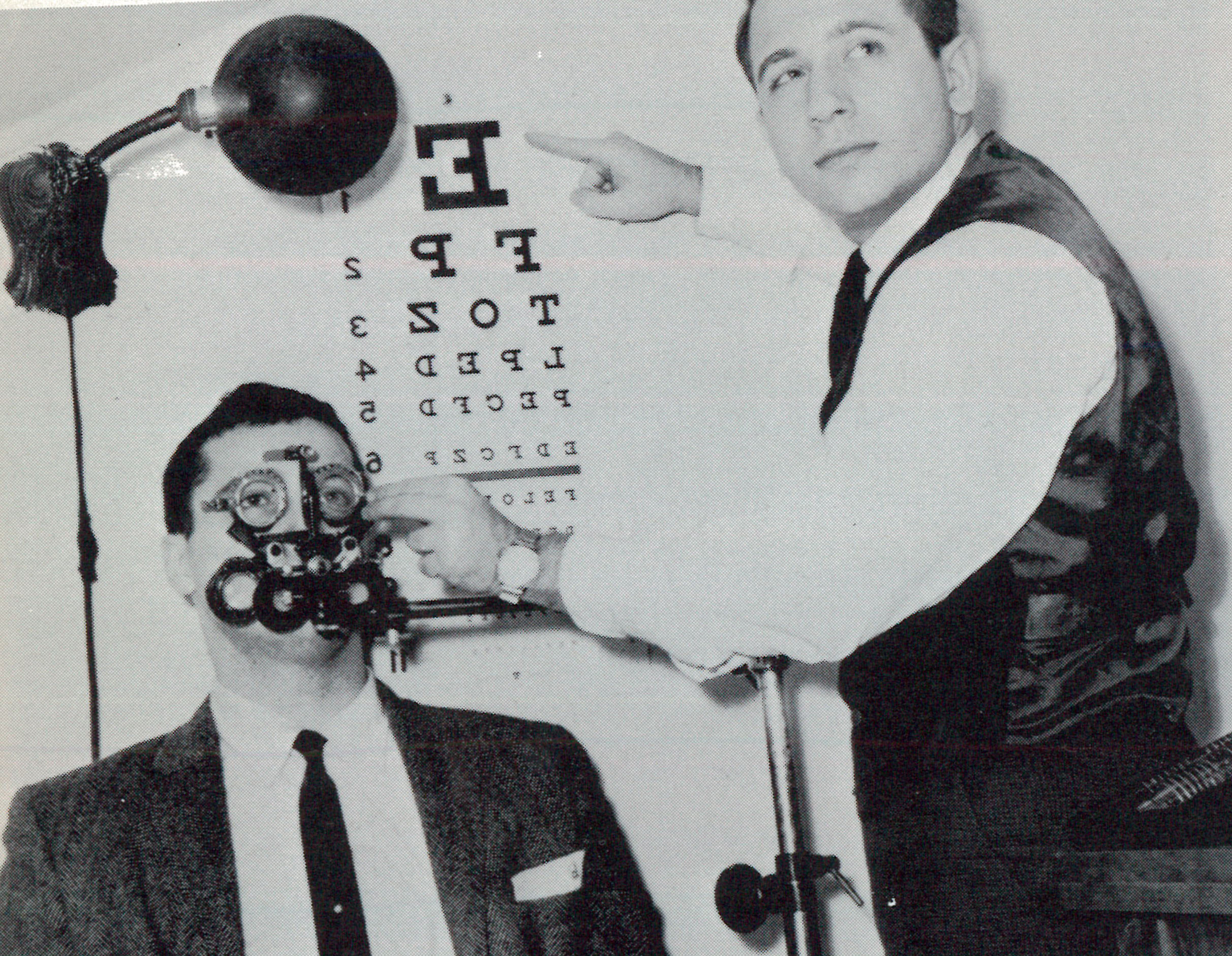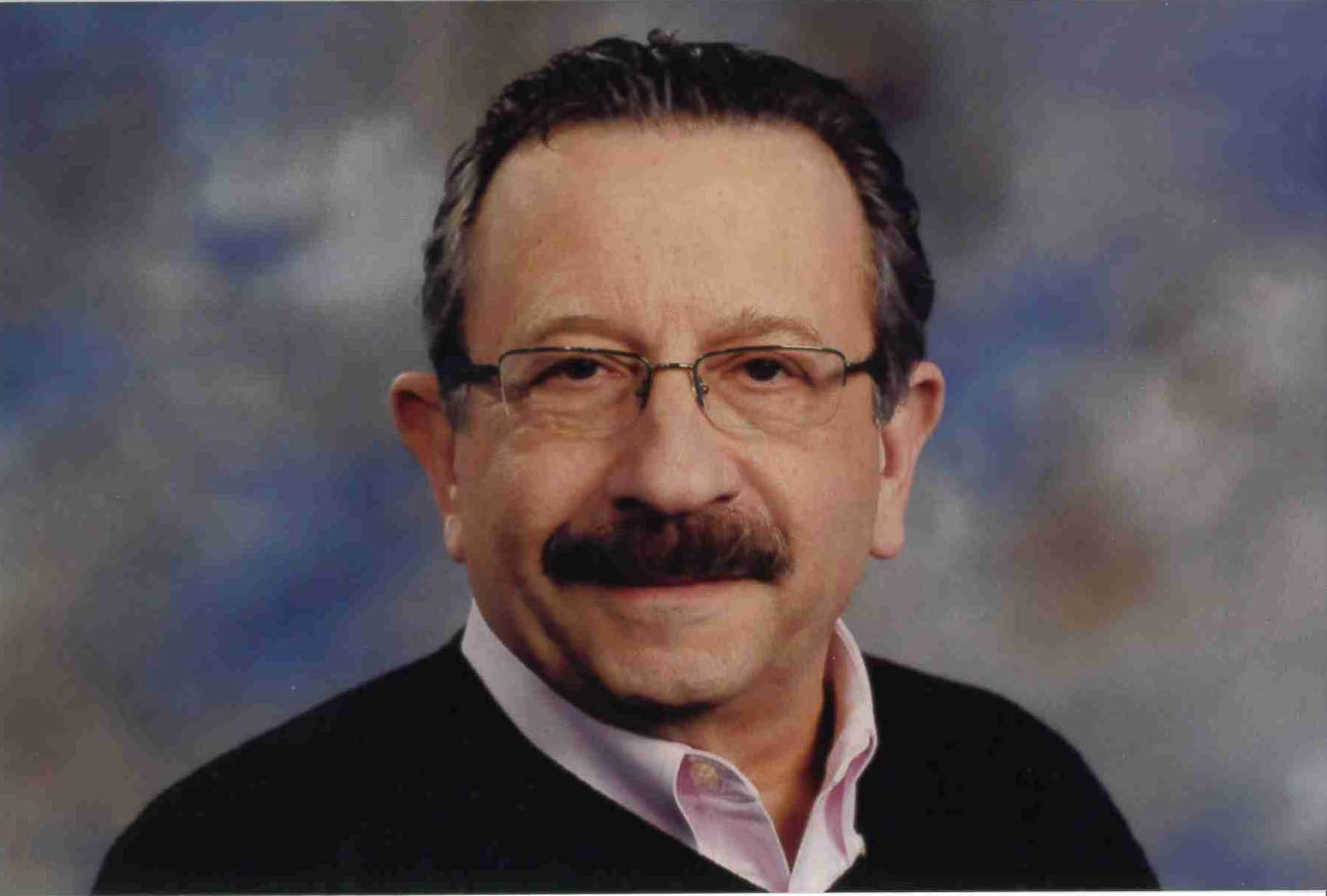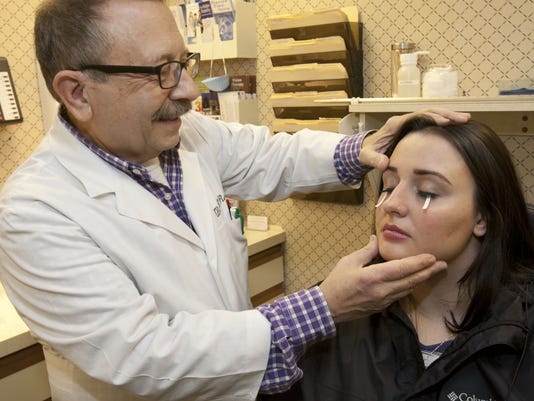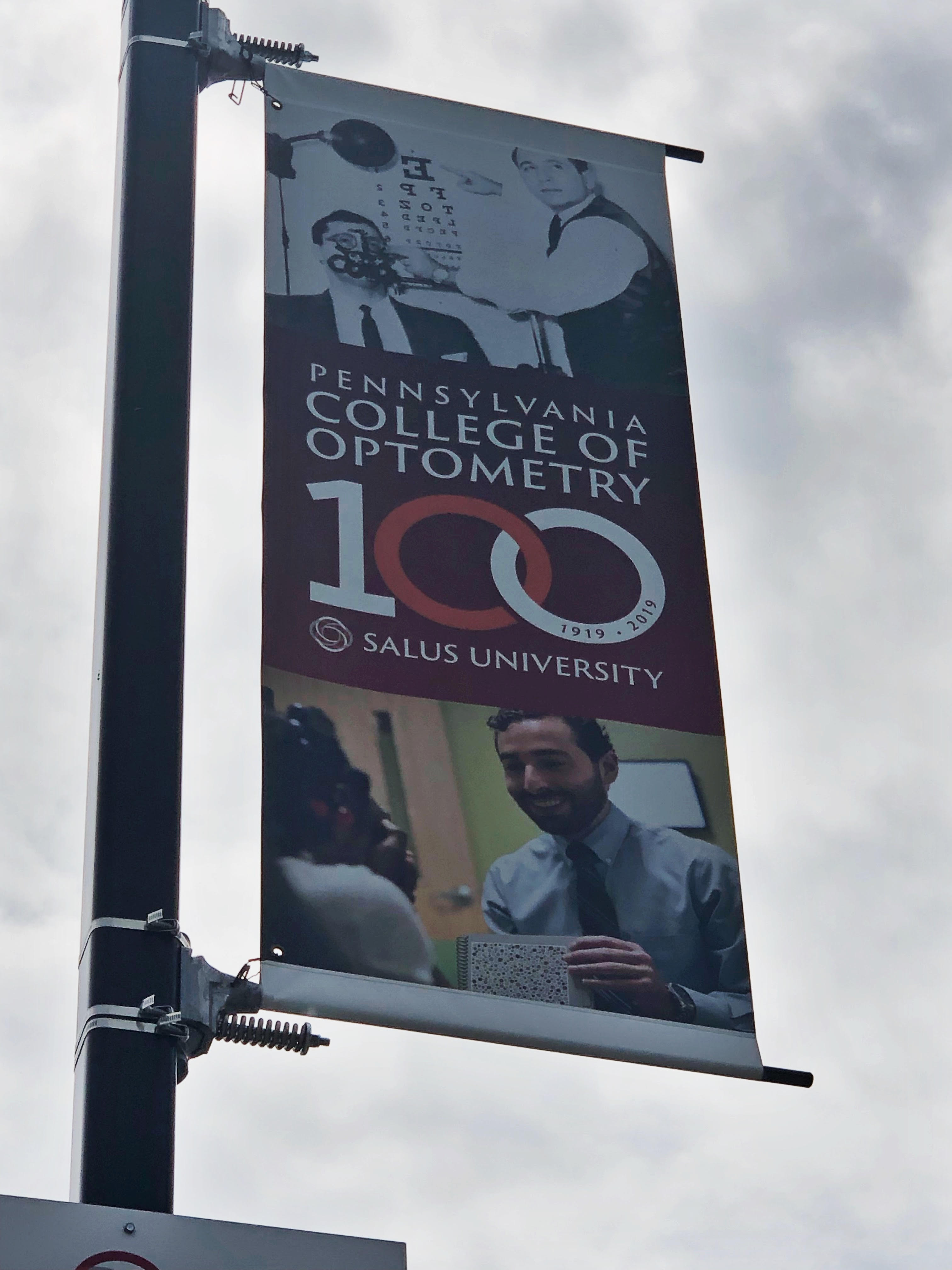Like many of our alumni, Dr. Errol Rummel recently received Salus University’s Centennial Alumni Magazine in the mail. While it’s not unusual to see a familiar face or two throughout the pages, Dr. Rummel didn’t expect to see a picture of himself as a student on a full page spread.
 The original picture, found on page 16 of the 1965 yearbook, can now be found on page 15 of the special edition magazine (and on flags around The Eye Institute's (TEI) parking lot). In the picture, Dr. Rummel stands on the right-hand side pointing to an eye chart on the wall as he performs an eye test on a classmate.
The original picture, found on page 16 of the 1965 yearbook, can now be found on page 15 of the special edition magazine (and on flags around The Eye Institute's (TEI) parking lot). In the picture, Dr. Rummel stands on the right-hand side pointing to an eye chart on the wall as he performs an eye test on a classmate.
Upon seeing his picture again, Dr. Rummel picked up the phone and called his alma mater to identify himself. What came of that phone call was not only a name to the face, but a reflection upon a career that led him to become one of the only optometrists in the country to be a Fellow of the American Academy of Optometry (FAAO), a Fellow in Neuro-Optometric Rehabilitation (FNORA), Fellow in Vision Therapy and Vision Development (FCOVD), and Fellow in Low Vision (FIALVS).
Born and raised in New York City, Dr. Rummel grew up just outside the realm of optometry. While his grandfather was an optician, his father was a jeweler by profession. In those days, the two jobs worked relatively close to each other, as it was common for jewelers to sell reading glasses and use jewelers’ plyers to adjust and fit wire lens frames. “While other kids were playing with blocks, I was playing with lenses I found in my father’s store,” Dr. Rummel said.
Although he was surrounded by lenses and eyeglass frames of every kind, Dr. Rummel dealt with his own vision issues. As the son of a retail jeweler, he spent most of his childhood days as a messenger, walking through the streets of Manhattan on deliveries. For people with perfect vision, New York City can be hard to navigate – but for Dr. Rummel, it was nearly impossible. Unable to see the signs at each subway stop, at age 10, he had to resort to asking fellow passengers to notify him when they reached his destination.
 Inspired by his difficulty with navigating the city, Dr. Rummel felt like he had an income-producing idea on his hands. “I used to tell people of my idea to increase the size of street signs,” he said. Assuming that he was not alone in his inability to read them, Dr. Rummel thought his idea was groundbreaking. “People used to laugh but I was serious. I thought it was an invention everyone needed,” he said.
Inspired by his difficulty with navigating the city, Dr. Rummel felt like he had an income-producing idea on his hands. “I used to tell people of my idea to increase the size of street signs,” he said. Assuming that he was not alone in his inability to read them, Dr. Rummel thought his idea was groundbreaking. “People used to laugh but I was serious. I thought it was an invention everyone needed,” he said.
Like many other children in school, in order to avoid scrutiny from his peers, Dr. Rummel memorized the school vision test chart. For years, he got away with it – that is until the school hired a new nurse – and with a new nurse came a new eye chart test. Instantly, the moment he had been avoiding for years finally transpired – he failed the eye test.
At the age of 13, Dr. Rummel was sent to an optometrist. With little to no expectations for how the appointment would go, he certainly did not expect to walk out of the office with a new outlook on life – literally and figuratively.
“The doctor put my glasses on and the first thing I remember seeing was the leaves on the trees across the street. I had never seen them before,” he said. From that moment on, he knew he wanted to help other people see more clearly.
 Years later, after completing his pre-optometric training at New York University, Dr. Rummel started his journey as a student at the Pennsylvania College of Optometry (PCO). With fond memories of “Old Main” and anatomy professor Dr. Onofrey Rybachok, PCO left a lasting mark on him.
Years later, after completing his pre-optometric training at New York University, Dr. Rummel started his journey as a student at the Pennsylvania College of Optometry (PCO). With fond memories of “Old Main” and anatomy professor Dr. Onofrey Rybachok, PCO left a lasting mark on him.
Upon completing his degree, Dr. Rummel opened a private practice in Putnam County, N.Y. only to be drafted into the military shortly after. For the next two years, Dr. Rummel served as a captain in the Optometry Section of the Army Medical Service Corps at Fort Sam Houston in San Antonio, Texas, and at Fort Dix, N.J.
Once his time in the Army ended, Dr. Rummel opened a practice in Jackson, N.J., which quickly grew to become one of the most successful in the state.
Over the years, Dr. Rummel has served in a wide variety of roles - most recently running Rummel Eye Care and the Low Vision Care Center, Jackson, N.J., and working as director of the Neuro-optometric Rehabilitation Clinic at the Bacharach Institute for Rehabilitation, Pomona, N.J.
After years of treating people with different vision problems, Dr. Rummel began to take a special interest in caring for those with stroke-related or side vision loss, also known as hemianopsia. As one of the most common side effects of a stroke, hemianopsia can leave a person disoriented and struggling to make it through the day.
 Having designed and prescribed hundreds of optical systems to expand side vision, Dr. Rummel realized a more effective field expansion device was needed, and that a detailed system was necessary for doctors to learn how to accurately examine, prescribe and instruct a patient in using such a device.
Having designed and prescribed hundreds of optical systems to expand side vision, Dr. Rummel realized a more effective field expansion device was needed, and that a detailed system was necessary for doctors to learn how to accurately examine, prescribe and instruct a patient in using such a device.
In 2013, after learning what worked and what did not work, Dr. Rummel designed and developed Side Vision Awareness Glasses (SVAG). Serving as a neuro-optical field expansion device, people who use SVAG receive an increase in side vision awareness. The use of SVAG helps enhance the patient’s performance of daily activities and may even allow some to drive again.
At the end of last year, Dr. Rummel chose to retire from the general practice of optometry so he could focus his time on SVAG. “There are now about 20 doctors throughout the country prescribing SVAG,” he said. “Since my name is associated with the product, I needed to be sure that every doctor knows exactly what they are doing.”
Dr. Rummel has three grown children, two sons and a daughter. He is married to Dr. Robin Sapossnek, FCOVD, FNORA, an optometrist who directs Holistic Vision in Huntingdon Valley, Pa.
Earlier this year, Dr. Rummel was granted emeritus status for his FNORA and FCOVD certifications.